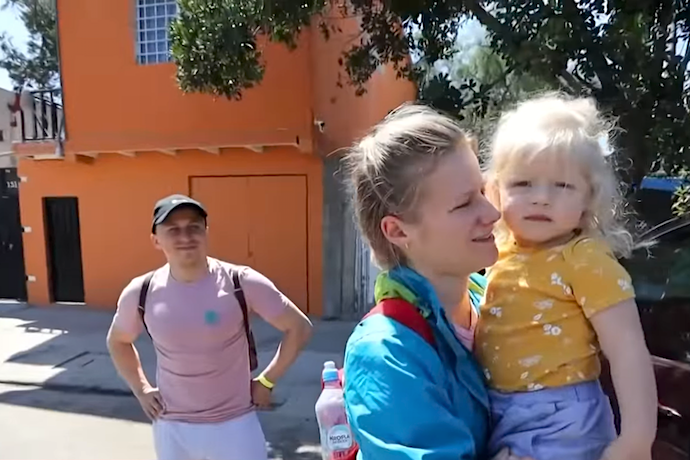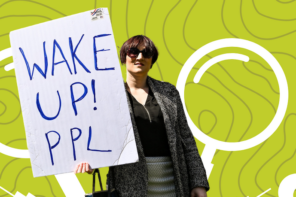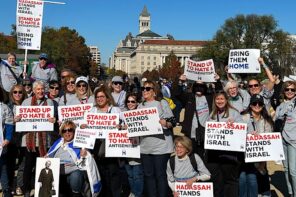World Refugee Day on June 20, 2022 recognizes the more than 100 million asylum seekers, internally displaced people, stateless people, and refugees who’ve been forcibly displaced from their homes as a result of human rights violations—many in the first months of 2022 alone. This day was established by the United Nations as an urgent reminder that these people, across skin colors, national origins, immigration status, and genders, are fellow human beings and deserve the same rights to safety and protection—in addition to the same access to medical care, schooling, and the opportunity to work—as citizens themselves. This year also bears witness to the highest number of refugees in history, along with a stubborn strain of white nationalism embedded in politics from the local to the federal levels across the globe. This parallel is no coincidence.
As I discuss in my book, Homegrown Hate: Why White Nationalists and Militant Islamists Are Waging War against the United States, refugees and immigrants of color, in particular, have been portrayed as threats to white people demographically and economically by white nationalists for centuries. I examine how terrorists—from the Australian white nationalist who killed 51 people in an attack on a pair of mosques in New Zealand to the two American white nationalists who killed 22 people at an El Paso WalMart and 11 at the Tree of Life Synagogue in Pittsburgh—articulate this danger, also called The Great Replacement Theory, as the reason for their heinous acts. Most recently, the white nationalist killer of 10 Black shoppers in Buffalo cited The Great Replacement theory in his own manifesto.
White nationalism is predicated upon a platform of racism, religious beliefs, anti-government views, and/or conspiracy theories and disinformation. Yet, this once-extreme amalgamation is now mainstream.
The disheartening reality is that white nationalist xenophobia and racism are not exclusive to those who identify as white nationalists. While refugees of all colors experience multi-faceted traumas, Black and brown refugees continue to be especially dehumanized because of their skin color. As the Russian invasion of Ukraine illustrates, even Black and brown Ukrainian citizens are still denied access to the very programs they need to survive as refugees fleeing their homeland.
Moreover, much of the world rallies behind white refugees from Ukraine in contrast to Black and brown refugees from Ukraine and around the world. Such solidarity is displayed in Ukrainian flag bumper stickers, locally organized rallies around the United States, celebrity fundraisers, social media organizing, and the auctioning of NFTs. Such displays make no obvious attempt to remedy the disproportionately difficult barriers faced by Black and brown refugees from Ukraine or any other country.
Where was this sense of international responsibility toward refugees from Syria who’ve similarly suffered from Russian warmongering? Where was this solidarity with Afghans whose homeland was decimated by the longest US-led military campaign in American history and the subsequent military drawdown, or the Afghans who sacrificed their well-being and their families in support of American troops and yet denied special immigrant visas? Where was this affinity for the Latine families who’ve been seeking the same safe havens for years in the United States as those granted to white Ukrainian refugees at the US-Mexico border in a matter of hours?
CBS News foreign correspondent Chris D’Agata provided an unintentionally revealing answer to these questions in February 2022, when he suggested that Kyiv, the capital of Ukraine, was an unexpected site of war, because it was “civilized,’’ unlike “Iraq or Afghanistan, that has seen conflict raging for decades.” Though D’Agata provided a formulaic apology soon thereafter, if not for the failure to recognize that the lack of “civility” in Iraq and Afghanistan could be attributed to US-led war, then because his choice of words revealed the mindset of many, from celebrities to individuals, who’ve converged to provide an outpouring of support to a certain demographic of Ukrainian refugees: Being white means to also be inherently deserving of emotional, physical, and monetary resources.
D’Agata’s responses and the international swell of support for white Ukrainian refugees are, of course, not the same as the white nationalist mindset of the terrorists I write about in Homegrown Hate, or even to the strident support of white nationalism by many members of the Republican Party that I also discuss in my book. However, they illuminate the worldview that’s complicit in upholding the notion that underpins white nationalism—white is right—and that disregards people of color as less than.
Of course the dehumanization of Black and brown refugees isn’t new. In the 1990s, Black refugees from Rwanda were fleeing genocide. One million Tutsis and their allies were killed in a matter of weeks. During this same decade, the Bosnian War wreaked havoc in the Balkans. Genocides such as the Srebrenica massacre took place. Indeed, the wars in Rwanda and Bosnia have many similarities. Yet, the media coverage differed greatly. Fair-skinned Bosnians were contextualized, personalized, and humanized, while Black Rwandans were depicted as the undeserving Other.
Whatever the color of our skin, we’re living on the same planet that’s currently beleaguered by overlapping crises, including racism, wars, the climate crisis, inflation, viral diseases, and the COVID-19 pandemic. Though skin color is one factor that determines how we’re impacted by these crises, we—individually and collectively—must take a stand in support of the rights of refugees of every color and of every citizenship status, and by doing so work to end the white nationalist narrative of hate.





